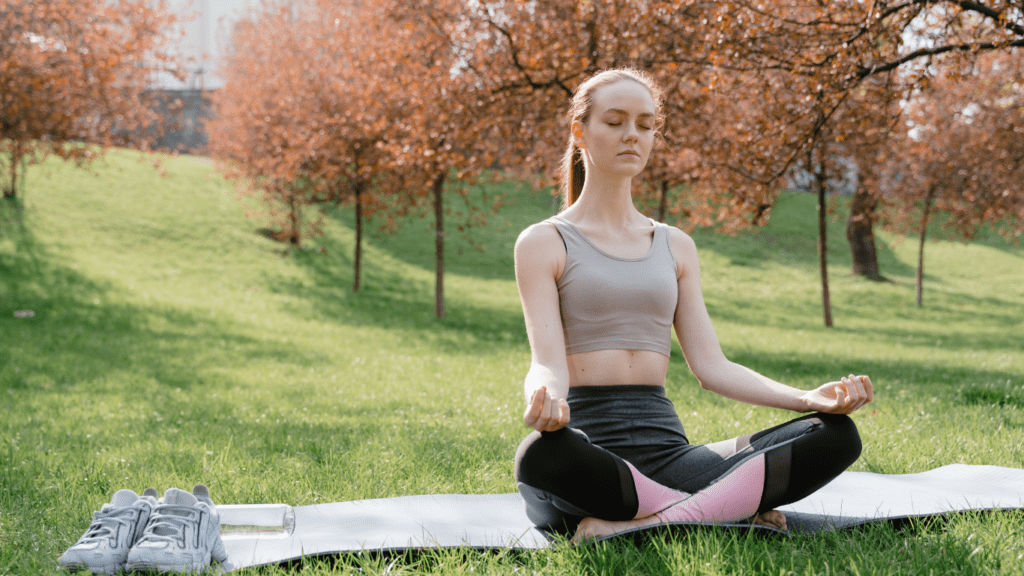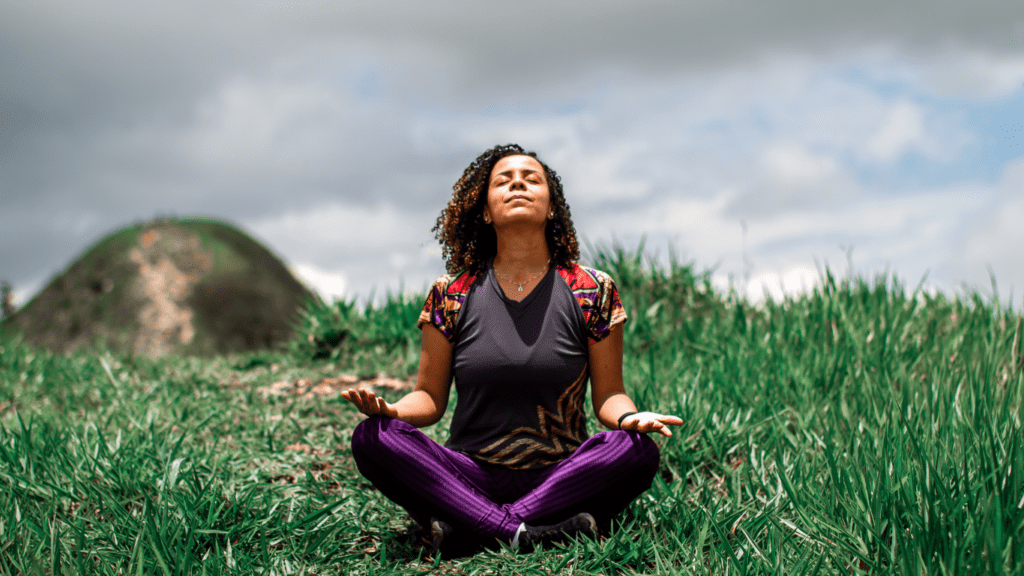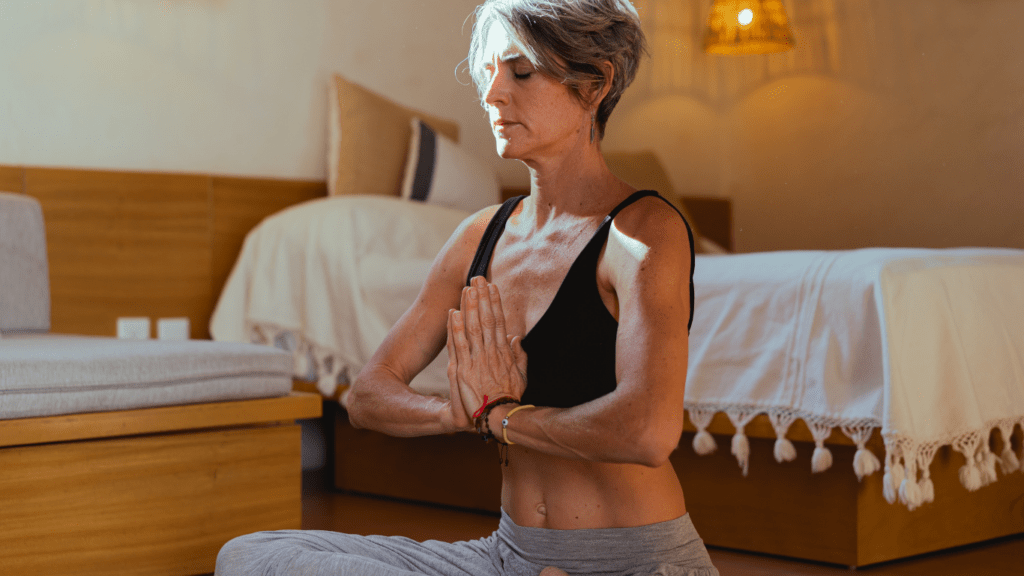Understanding Meditation
Meditation is a practice where you focus your mind on a particular object, thought, or activity. By doing this, you train attention and awareness, achieving mental clarity and emotional calm. This practice has roots in ancient traditions, including Hinduism and Buddhism, but modern meditation draws from various disciplines.
Types of Meditation
There are numerous meditation techniques. Here are three popular types:
- Mindfulness Meditation: Focus on your breath and observe thoughts and feelings without judgment. This practice derived from Buddhist teachings aims to anchor you in the present moment.
- Transcendental Meditation: Silently repeat a mantra to settle your mind into a state of restful alertness. Founded by Maharishi Mahesh Yogi in the 1950s, this technique seeks to transcend ordinary thinking.
- Loving-Kindness Meditation: Direct feelings of love and compassion towards yourself and others. This practice promotes emotional healing by developing kindness.
Benefits of Meditation
Meditation offers a range of benefits:
- Stress Reduction: Regular practice lowers cortisol levels, reducing stress and anxiety.
- Enhanced Focus: Increases the brain’s grey matter, improving concentration and cognitive abilities.
- Emotional Well-Being: Boosts mood and emotional resilience by promoting positive thinking and self-awareness.
Common Misconceptions
Several myths about meditation persist:
- “It’s Religious”: While rooted in spiritual traditions, modern meditation is often secular and available to everyone regardless of belief.
- “Requires Empty Mind”: The goal isn’t to eliminate thoughts but to observe them without attachment.
- “Takes Hours”: Even a few minutes daily can be beneficial.
Understanding these facets of meditation helps set realistic expectations and clears common doubts.
Benefits of Meditation
Meditation offers several benefits that enhance both physical and mental health. These advantages make it an appealing practice for individuals seeking to improve their overall well-being.
Physical Benefits
Meditation positively impacts physical health by reducing stress levels. Lower stress levels lead to lower cortisol production. Reduced cortisol levels lower blood pressure and strengthen the immune system. Regular meditation also improves sleep quality, aiding those with insomnia by promoting relaxation.
Deep breathing during meditation can improve lung capacity. Enhanced lung capacity increases oxygen flow in the body, boosting energy levels. According to the American Heart Association, consistent meditation practice lowers the risk of heart disease by improving heart rate variability.
Mental Benefits
Meditation sharpens mental clarity and focus. According to a study by Harvard Medical School, mindfulness meditation increases the brain’s gray matter, which enhances attention and emotional regulation. Practicing meditation regularly reduces symptoms of anxiety and depression. Lower anxiety levels lead to improved mood and an overall sense of happiness.
Emotional stability is another key benefit. Meditation fosters a heightened sense of self-awareness, which helps individuals manage their emotions better. This practice cultivates compassion and empathy, improving personal relationships.
By integrating these aspects, meditation enhances both physical and mental health, making it a valuable addition to any daily routine.
Types of Meditation

There are various types of meditation suitable for beginners, each with unique approaches and benefits. I’ll detail some popular methods, including mindfulness, concentration, and guided meditation.
Mindfulness Meditation
Mindfulness Meditation focuses on building awareness and living in the present moment. Practitioners observe thoughts, feelings, and sensations without judgment. By doing this, you can cultivate a non-reactive stance towards experiences. Popular techniques include breath awareness, body scans, and observing sensations.
Concentration Meditation
Concentration Meditation involves focusing on a single point of attention. This can be a breath, a word, or a candle flame. The goal is to improve concentration by holding attention to one object. When the mind wanders, gently bring it back to the point of focus. This type of meditation enhances mental clarity and reduces scattered thinking.
Guided Meditation
Guided Meditation uses a narrator or recording to lead you through the practice. It often involves visualizations, body scans, or specific themes like stress relief. This method is helpful for those who find silence daunting or prefer structure. With guided sessions, you can benefit from expert instruction and explore various meditation techniques.
Preparing for Your Meditation Practice
Creating a conducive environment for meditation is crucial. Proper setup and timing enhance the experience, maximizing benefits.
Setting Up Your Space
Choosing a quiet and comfortable space is essential. First, identify a clutter-free area, which minimizes distractions. For example, a corner of a bedroom or a small alcove works well. Second, ensure you have a comfortable seat or cushion; this supports a straight posture. Adequate lighting, preferably natural light, is beneficial. Soft lighting is an alternative if natural light is unavailable. Finally, consider adding calming elements like candles or soothing music. These elements enhance relaxation and improve focus.
Choosing the Right Time
Selecting an appropriate time for meditation can impact your practice. Early morning sessions often work best, when the mind is fresh and external noise minimal. Alternatively, evening sessions help unwind after a long day. Consistency is key. Try meditating at the same time each day to establish a habit. Begin with short sessions, about 5-10 minutes, then gradually increase the duration as your comfort level grows.
Getting Started with Meditation
Embarking on a meditation journey involves learning some basic techniques and focusing on breathing exercises. These elements form the foundation for a successful and fulfilling practice.
Basic Techniques
When starting out, I found it helpful to follow these basic techniques:
- Find a Comfortable Position: Sit or lie down in a position that feels comfortable yet supports an upright posture. For example, sit in a chair with your feet flat on the floor or use a meditation cushion.
- Set a Timer: Use a timer to ensure a dedicated time for meditation. Start with 5-10 minutes and gradually increase the duration.
- Focus Your Attention: Choose an object of focus, such as your breath, a mantra, or a lit candle. This helps anchor your mind and minimize distractions.
- Acknowledge Thoughts: When thoughts arise, acknowledge them without judgment, then gently return to your focus. This practice enhances mindfulness and concentration.
Breathing Exercises
Breathing exercises play a critical role in meditation. Incorporating these into your practice can deepen relaxation and improve mental clarity:
- Deep Breathing: Inhale deeply through the nose, filling your lungs and expanding your belly. Exhale slowly and completely through the mouth. Repeat for several breaths, allowing the mind to settle.
- Box Breathing: Inhale for a count of four, hold the breath for four, exhale for four, and pause for another four. This rhythmic pattern promotes calm and centeredness.
- Alternate Nostril Breathing: Use your thumb to close one nostril and inhale through the other. Close the opposite nostril and exhale through the first. Repeat on both sides to balance energy and reduce stress.
By mastering these basic techniques and breathing exercises, meditation becomes an accessible and rewarding practice.
Overcoming Common Challenges
Many beginners face hurdles when starting meditation. I’ll address common issues and offer effective solutions.
Staying Focused
It’s common for the mind to wander during meditation. Focus on breathing to draw attention back. Inhale deeply through your nose, hold for a second, and exhale through your mouth. Repeat this process whenever distracted. I find using a simple mantra can be helpful. Phrases like “I am calm” or “I am here now” work well. Repeat the chosen mantra mentally to maintain concentration.
Building Consistency
Meditation becomes easier with regular practice. Set a fixed time daily to build a routine. Start with 5-minute sessions, then increase gradually. I recommend tracking progress in a journal. Record meditation times, durations, and experiences to stay motivated. If you miss a session, don’t worry; just resume the next day. Consistency trumps perfection in cultivating the habit.




